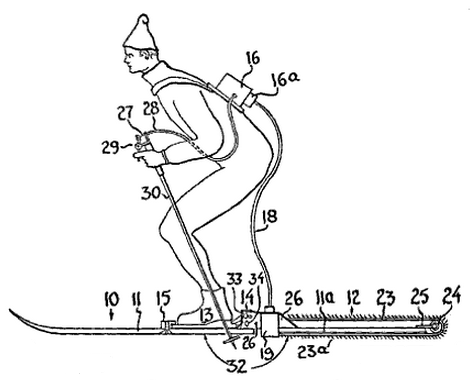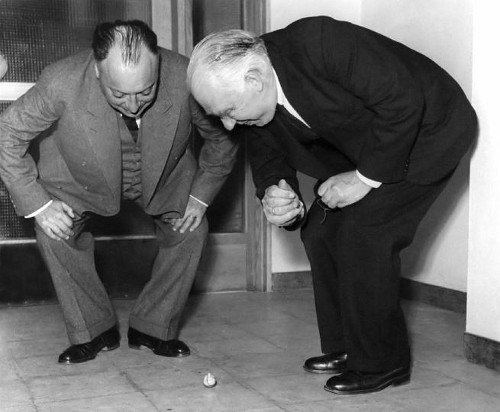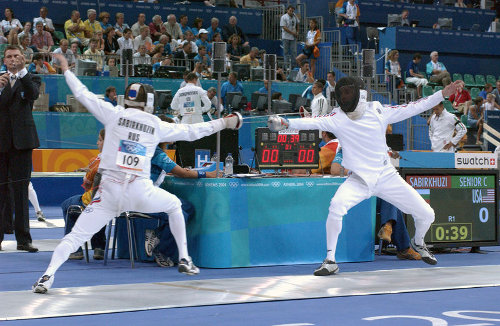
treen
adj. made of wood

treen
adj. made of wood
A magician asks you to shuffle a pack of cards and to take some quantity of them. He takes a larger packet for himself. The magician counts his cards and says, “I have as many cards as you have, plus four cards, and enough left to make 16.”
You count your cards and find that you have 11. The magician counts 11 of his cards onto the table, sets aside a further four, and then continues counting: 12-13-14-15-16. The 16th card is the last, as he predicted.
He can repeat the feat as often as you request it. The number of cards that he sets aside sometimes varies, but he always arrives at the predicted quantity. How does he do it?
In August 1857, 13-year-old Narcisse Pelletier left Marseilles as a cabin boy aboard the Saint-Paul, a three-masted ship bound for Sydney. The ship struck a reef in Papua New Guinea, and Pelletier was feared dead. His parents mourned him for 17 years, until July 21, 1875, when they received this letter:
papa mama i am not dead i am living narcisse I was on board the saint paul of bordeaux I had been shipwrecked in the rock of the savage of the island the chinese in the island stayed and died killed I came in a little boat to an island of savages I had looked for water to drink the captain left in the little boat I looked for water in the woods I stayed in the woods I then see the savages who live on its coast come who had found me the savage gave food and drink he did not kill I give my hand he did not hurt me I stayed in the wood for a very long time I was almost dead I had o great hunger and great drink I was in a lot of pain
Pelletier explained that after the sinking he, the captain, and the surviving crew had crossed the Coral Sea in an open boat to Cape York in northern Australia, where Pelletier was somehow left behind and discovered by a community of aborigines, with whom he lived until he was discovered that year by a landing party from pearling boat. He returned to France, where his thanksgiving mass was celebrated by the same priest who had baptized him 32 years earlier. He married and lived quietly as a lighthouse-keeper until his death in 1894.

Royce Husted’s “power-driven ski,” patented in 1976, adds a motor-driven belt to conventional skis to create, in effect, a standing snowmobile:
Applicant’s invention provides the skier on the one hand with some of the challenges, such as holding balance, etc., of downhill skiiing without the dependency on hilly terrain and ski lifts, and on the other hand it is much less cumbersome to use, to transport and to store than the snowmobile, and less expensive to produce and maintain.
This would make February commutes so much easier …
https://youtube.com/watch?v=xu_Dp9IfgSU%3Frel%3D0
The tippe top is a round top that, when spun, tilts to one side and leaps up onto its stem. This is perplexing, as the toy appears to be gaining energy — its center of mass rises with the flip.
How is this possible? The geometrical center of the top is higher than its center of mass. As the toy begins to topple to one side, friction with the underlying surface produces a torque that kicks it up onto its stem. It does gain potential energy, but it loses kinetic energy — in fact, during the inversion it actually reverses its direction of rotation.
Entire treatises have been written on the underlying physics, and the toy has occupied at least two Nobel Prize winners — below, Wolfgang Pauli and Niels Bohr play with one at the inauguration of the Institute of Physics at Lund, Sweden, in July 1954.

German astronomer Karl Reinmuth discovered and named more than 400 asteroids. Among them are these eight:
1227 Geranium
1228 Scabiosa
1229 Tilia
1230 Riceia
1231 Auricula
1232 Cortusa
1233 Kobresia
1234 Elyna
Their initials spell G. STRACKE, for Gustav Stracke, a fellow astronomer who had asked that no planet be named after him. In this way Reinmuth could honor his colleague without contradicting his wish.
University of Michigan mathematician Norman Anning offered this “non-commutative soliloquy of an introspective epistemologist” in Scripta Mathematica in 1948:
[(N + H)ow + (T + W)hat](I know).
Expand the expression and you get Now I know how I know that I know what I know.

The modern pentathlon comprises five events: show jumping, fencing, 200-meter freestyle swimming, pistol shooting, and a 3-kilometer cross-country run.
Pierre de Coubertin, the founder of the modern Olympic Games, conceived the sport to reflect the skills needed by a Napoleonic cavalry officer: He must ride across unfamiliar terrain; engage an opponent at swordpoint; swim a river that his steed cannot cross; exchange fire with his enemies; and run across country.
Coubertin believed that this event, more than any other, “tested an athlete’s moral qualities as much as their physical resources and skills, producing thereby the ideal, complete athlete.”
(Thanks, Julius.)

In 1927, Eleanor Roosevelt composed a seven-point “ethics of parents”:
“The next generation,” she wrote, “will take care of itself.”
“Fashion is something barbarous, for it produces innovation without reason and imitation without benefit.” — George Santayana